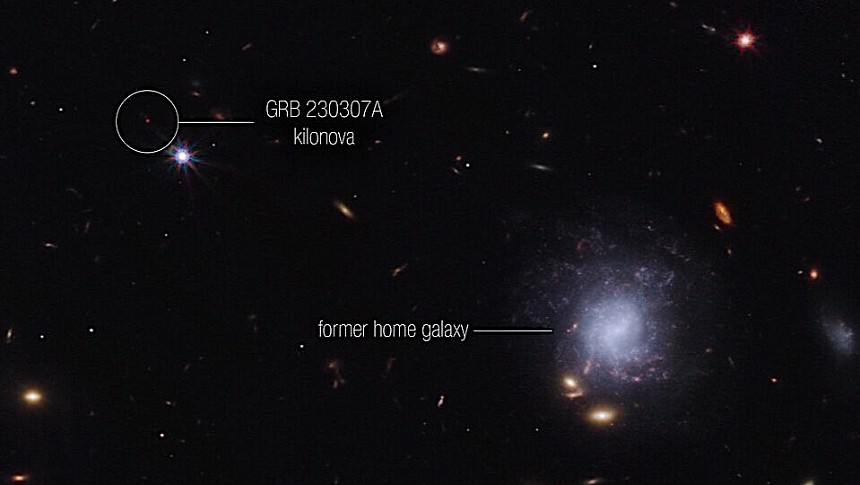The value of an element here on Earth is determined by two things: its rarity, and what it can be used for. As things stand today, one of the rarest elements known to man is platinum: it takes a lot of effort to find the stuff, which has an average abundance of just 5 micrograms per kg in the Earth's crust. But what if we told you a space telescope found something even rarer in space, from millions of light years away?
The element I'm talking about is tellurium, something mostly used here on Earth first and foremost in the chemical industry. More importantly for space exploration, it sits right next to iodine in the periodic table, and that's a crucial component for life as we know it to happen.
All of the above are elements of uncertain nature, meaning we don't necessarily understand how they form, especially out there in the Universe. But the recent findings of a team of scientists using a series of ground and space-based telescopes, including the James Webb, might shed new light on the mystery.
Webb was instrumental in studying the "second-brightest gamma-ray burst" witnessed by humankind in half a century of observation. First spotted by the Fermi Gamma-ray Space Telescope in March 2023, it originated no less than 8.3 million light years from our planet, lasted for just 200 seconds, and was about 1,000 times brighter than what we usually get.
Scientists say the burst is likely the result of something called a kilonova. Extremely rare occurrences even in this vast Universe of ours, kilonovas are huge explosions caused by the merger of two neutron stars.
This particular burst, called GRB 230307A, is where Webb picked up traces of tellurium, and got people all worked up about the possibility that iodine might have been formed this way as well.
This discovery is not important in the way that it gives us some sort of access to an element we can hardly come by here on Earth. It does prove however that the merger of neutron stars may be where some of the rarest chemical elements heavier than iron are born.
According to Ben Gompertz, scientists at the University of Birmingham and one of the people behind these observations, there is hope Webb will be able to detect even heavier elements, and that could lead to a complete transformation of how we understand the Universe.
To do that, more kilonovas need to be located, and despite their scarcity there are hopes more will be found, given the "increasing number of opportunities to have space and ground-based telescopes working in complementary ways."
The work of Webb on the GRB 230307A can be studied in detail in Nature, where the paper on the subject was published.
All of the above are elements of uncertain nature, meaning we don't necessarily understand how they form, especially out there in the Universe. But the recent findings of a team of scientists using a series of ground and space-based telescopes, including the James Webb, might shed new light on the mystery.
Webb was instrumental in studying the "second-brightest gamma-ray burst" witnessed by humankind in half a century of observation. First spotted by the Fermi Gamma-ray Space Telescope in March 2023, it originated no less than 8.3 million light years from our planet, lasted for just 200 seconds, and was about 1,000 times brighter than what we usually get.
Scientists say the burst is likely the result of something called a kilonova. Extremely rare occurrences even in this vast Universe of ours, kilonovas are huge explosions caused by the merger of two neutron stars.
This particular burst, called GRB 230307A, is where Webb picked up traces of tellurium, and got people all worked up about the possibility that iodine might have been formed this way as well.
This discovery is not important in the way that it gives us some sort of access to an element we can hardly come by here on Earth. It does prove however that the merger of neutron stars may be where some of the rarest chemical elements heavier than iron are born.
According to Ben Gompertz, scientists at the University of Birmingham and one of the people behind these observations, there is hope Webb will be able to detect even heavier elements, and that could lead to a complete transformation of how we understand the Universe.
To do that, more kilonovas need to be located, and despite their scarcity there are hopes more will be found, given the "increasing number of opportunities to have space and ground-based telescopes working in complementary ways."
The work of Webb on the GRB 230307A can be studied in detail in Nature, where the paper on the subject was published.





